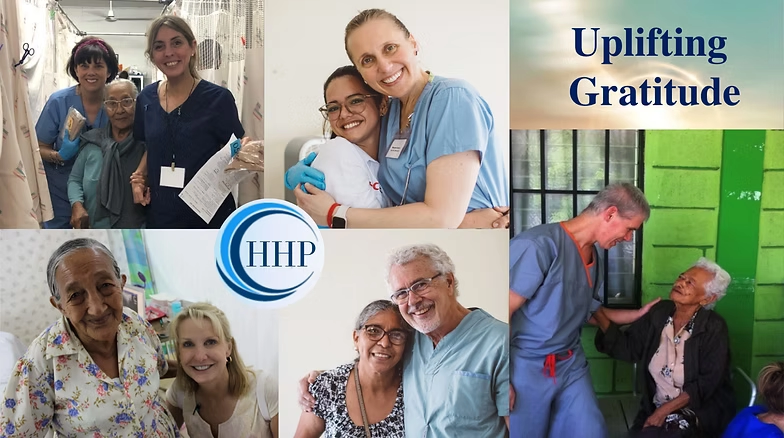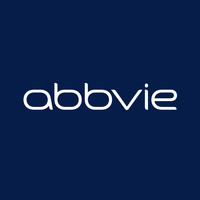A Reason to Care
By the time María felt the first sting of pain in her leg, the damage had already begun. At first, she ignored it—there was no time to rest when the fields needed tending and her children needed feeding. But as the months passed, the dull ache deepened into something sharper, a constant throb that made each step feel heavier. The swelling came next, then the dark, twisting veins bulging beneath her skin—signs of chronic venous disease, a condition that, left untreated, could take more than just her comfort. It could take her livelihood. In La Ceiba, public hospitals are overcrowded, and specialized care is often an impossibility. So María, like so many others, waited. Hoped. Endured.
A cure was coming, though, thousands of miles away, in the biting cold of Wisconsin.
Hope in a Shipping Container
Each January, a 42-foot shipping container is delivered to Chet Hermansen’s car care center in Madison, WI. The container has traveled all the way from Honduras, packed with harvests of bananas and pineapples, but its return trip will be much more meaningful.
For nearly a year, volunteers for the Hackett Hemwall Patterson Foundation (HHPF) have been preparing for this moment. Inside the facility, stacks of neatly labeled boxes line the walls—compression stockings, syringes, vials of polidocanol, medical gauze, surgical instruments—each item documented with meticulous precision to satisfy Honduras’s stringent import regulations. These supplies are collected throughout the year, through a combination of donations from manufacturers and HHPF spending precious monetary donations on necessary medications. Every donation, whether a single pair of compression socks or a bulk shipment of life-saving supplies, passes through the hands of Chet Hermansen and his son, Eric, the quiet architects behind the mission’s logistics. It’s a process built on patience, on persistence, on the certain knowledge that the smallest contribution could tip the balance between suffering and relief.
On a cold winter morning, volunteers gather outside Chet Hermansen’s warehouse. They come from all walks of life—neighbors, coworkers, retired nurses, students—many of whom have never set foot in Honduras. They form assembly lines, lifting and stacking, their hands numbed by the cold but steady with purpose. Box by box, the shipping container is filled, its steel frame now carrying both supplies and the collective goodwill of those who understand that the world does not change in grand gestures, but in small, determined acts.
“This is the only logical way to get these supplies to Honduras,” says Kay Weeden, president of HHPF. “Many of these items just aren’t available there, and even those that are can be prohibitively expensive. Every single piece of medical equipment, every vial of medication, is accounted for and necessary.”

Once sealed, the container begins its slow migration south. Hauled from Madison to a shipping port, it retraces the same routes that had, centuries ago, carried trade goods between these two shores. But at the end of its long voyage, in the dusty heat of a Honduran customs checkpoint, the true test begins. The supplies—vetted, documented, and indispensable—now face an uncertain passage through Honduras’s regulatory agencies.
As Weeden explains, the process is no longer as simple as it once was. “Until a few years ago, getting items into Honduras was relatively easy. Now, every individual item must be recorded—manufacturer, lot number, expiration date, weight, country of origin. Last year’s document was over 100 pages long. It took weeks just to get approval.”
The container’s safe passage through customs is overseen by Hermansen, whose dedication persists beyond the cold mornings in Madison: he travels to Honduras himself, addressing each of the bureaucratic hurdles that could delay or even jeopardize the mission. “Chet spends at least a month in Honduras supporting the missions,” Weeden explained. “He’s there waiting when the shipment arrives, making sure everything clears customs and gets to where it’s needed. Without him, none of this would happen.”
This part of the mission is absolutely critical, because waiting in places like La Ceiba, Tela, and Olanchito, are thousands of patients like María, for whom these shipments mean the difference between pain and relief, between endurance and healing.
Welcome to the Clinic
As the shipping container clears customs, another wave of volunteers arrives in Honduras, stepping off crowded buses into the thick air of La Ceiba, Tela, and Olanchito. The days ahead will be grueling: long hours on their feet and a never-ending line of patients whose conditions often reflect years, even decades, without proper medical care.
“The heat can be unrelenting,” admitted Dr. Meg Spartz, a specialist in veins and wound care who serves as Director for the Tela site. “As providers and volunteers, we all want to work our hardest and aren’t used to taking a few minutes to ourselves to rest in between cases.” The bus rides are long, the clinic days stretch from morning to night, and there are always more patients. But despite the physical toll, the energy in the clinics is undeniable. Each year, seasoned volunteers reunite like family, while first-timers find themselves swept up in the momentum of a mission larger than any one person. The work is exhausting, but also deeply fulfilling.

“My first trip was a whirlwind,” Dr. Spartz writes, “learning so many new skills in ultrasound and ultrasound guided foam sclerotherapy, meeting wonderful and wise practitioners, and learning about Honduras. I was hooked from the start and haven’t missed a year since… Even though I get home at the end and feel like I could sleep a couple days to catch up, I am also filled with renewed energy from meeting and treating so many wonderful patients, spending time with the Hondurans we see each year, and working closely with my fellow volunteers.”
Open-Door Policy
By midday, the waiting areas outside the clinics are filled with patients—farm workers, market vendors, grandparents clutching the hands of grandchildren. Some travel for hours, even days, for the chance to be seen. Many carry the quiet weight of chronic pain, the kind that does not scream for attention but instead steals movement, energy, and dignity one slow inch at a time.
“The patients we see in Honduras are generally not getting medical care anywhere else,” Dr. Spartz points out. “There is a free public health care system, but often times the care is not accessible. Each year we see over 1500 patients and the need for vein and wound care continues in the communities we serve. We treat large numbers of ulcers of all types, severe varicosities, and edematous legs. Without our annual clinics, there is very little to no vein or wound care available to these patients. What we do matters a lot.”

For María, and thousands of Honduran laborers like her, treatment means more than relief—it means reclaiming the ability to work, to care for family, to move freely again. A simple procedure, a pair of compression stockings, a vial of medication; each represent a small donation that, in combination, restore function and hope.
Weeden writes, “Returning year after year and seeing the progress made with patients treated before, plus reuniting with the Honduran family and friends is wonderful. Seeing the amazement and dedication from new volunteers learning about the vein care world is precious. That’s what drives me—wanting to make a true, obvious difference in this world, and wanting to share that with other like-minded people. So many choices, but this Foundation speaks to me.”
The Clock is Ticking
With the mission set to begin on March 7, 2025, and the final preparations are underway. Volunteers are confirming travel, supplies are being checked and double-checked, but there is still so much left to do.

Here’s the reality: Donations are still desperately needed. Without last-minute contributions, there won’t be enough compression stockings, medical supplies, or transportation funds to reach every patient who needs help.
Dr. Spartz makes it clear: “You can still be a vital part of the care and goodwill that is delivered by making a monetary donation to the foundation so we can purchase the supplies we still need.” With flights booked and clinics arranged, the HHPF team is committed—but they need your help now more than ever.
Whether it’s $10, $50, or more, here is your chance to be a part of this truly meaningful journey.
Your donation can be the reason someone walks without pain, the reason a mother can stand and work again. Please, donate today at HHPF’s website and help deliver hope to those who need it most.





